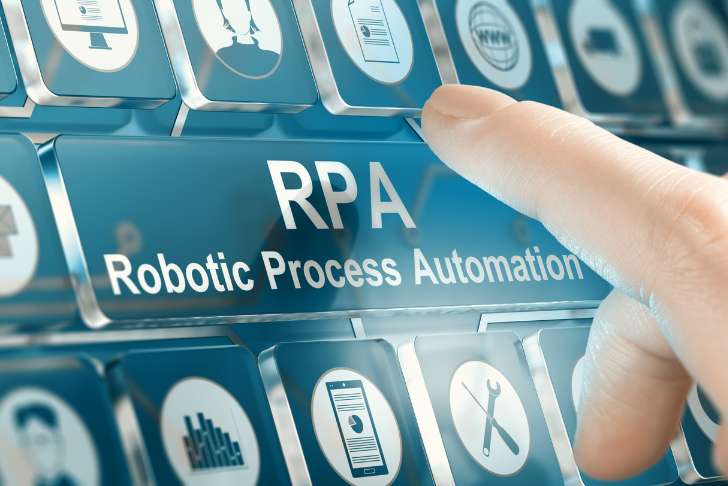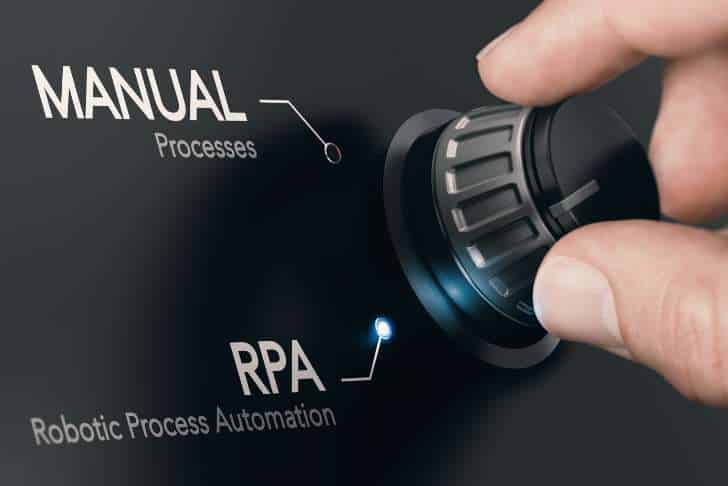In “Exploring the roles of RPA and DPA in Hyperautomation,” you will gain insights into two prominent categories of automation – Robotic Process Automation (RPA) and digital process automation (DPA). You will learn about how DPA is involved in the orchestration of people, bots, data, and systems, incorporating the use of AI to streamline tasks in a workflow, all while requiring human intervention for more complex decision-making processes. Examples of DPA in action, such as employee onboarding automation, will highlight its potential for increasing efficiency and saving valuable time. Meanwhile, get to understand how RPA emulates human interaction with digital systems to carry out tasks based on set rules, proving ideal for repetitive tasks which do not necessitate cognitive decision making. Discover how these two distinct yet intertwining categories form part of the broader concept of hyperautomation, supported by surprising forecast data from Gartner.

Understanding Robotic Process Automation (RPA)
Defining RPA
Robotic Process Automation, or RPA, is a field of technology that is focused on streamlining and automating manual tasks. By mimicking human interaction with digital systems, RPA effectively carries out rule-based tasks without much human intervention.
Rule-based responsibilities of RPA
At its core, RPA operates under a set of predetermined rules. This means it’s ideal for automating repetitive tasks that need little to no decision-making. It can execute any routine task, such as data entry or processing, that follows a fixed set of guidelines.
Advantages of using RPA
Implementing RPA can translate into a myriad of advantages for a business. It not only increases efficiency by reducing the time spent on repetitive tasks, but it also minimizes the chance of human error. This leads to considerable improvements in accuracy and performance, freeing up valuable time for your team to focus on tasks that require a personal touch.
Common instances of RPA in action
RPA can be seen in various sectors, carrying out a wide range of tasks. For instance, in customer service, RPA bots can handle routine inquiries, leaving only complex issues for the human agents. In finance, RPA can be used to automate invoicing, billing, and reporting – tasks that are prone to human error.
Digital Process Automation (DPA) and what it entails
Defining DPA
DPA, or Digital Process Automation, takes automation a step further. Unlike RPA, which focuses on individual tasks, DPA aims to automate whole processes. It accomplishes this by orchestrating people, bots, data, and systems.
The role of AI in DPA
In DPA, Artificial Intelligence (AI) plays a critical role in making the automation process more intelligent. AI can adapt to deviations in data or process, understand unstructured data, and make informed decisions, making DPA a powerful tool for businesses.
Human element in DPA
While DPA majorly deals with automation, it doesn’t completely rule out human participation. There are processes that still require higher-level cognitive decisions made by humans. DPA respects this boundary and seamlessly integrates human input where necessary.
Efficiency benefits of DPA-
Implementing DPA can lead to increased operational efficiency. By automating time-consuming procedures, it helps in saving both time and money. This freed up time can then be allocated to more strategic business tasks.
Real-world examples of DPA usage
DPA can be seen in action across various real-world scenarios. A prominent example is the onboarding of new employees. The act of a new employee login can trigger a set of automated steps such as setting up an email account, assigning necessary permissions, among others – saving considerable chaos and time.
How RPA and DPA Work Together
Interactions between RPA and DPA
While both RPA and DPA have their independent functional areas, they can often be used in conjunction for a more holistic automation strategy. RPA is good for automating specific tasks, while DPA excels at automating entire processes. Therefore, you can use RPA within DPA workflows to automate individual tasks within a larger process.
DPA’s incorporation of RPA into workflows
Many organizations that implement DPA into their workflows also incorporate RPA. The result is a hybrid model of automation, which takes advantage of the strengths of both technologies. This allows businesses to enjoy the best of both worlds: the extensive process automation of DPA and the rule-based task automation of RPA.
Introduction to Hyperautomation
Defining Hyperautomation
hyperautomation is a term that encompasses all the technologies related to the automation, integration, and optimization of a business process. It’s a methodology devised to scale automation in businesses. It leverages a suite of tools including RPA, DPA, AI, and machine learning to offer a comprehensive and coordinated approach to automation.
The role of RPA and DPA in Hyperautomation
Both RPA and DPA serve as integral components in achieving hyperautomation. While RPA takes care of rule-based tasks, DPA handles more complex processes. Together, they contribute towards forming an advanced, intelligent, and efficient automation ecosystem.

Comparing RPA and DPA
Differences in functionalities
While both RPA and DPA deal with automation, they differ in their scope and functionalities. RPA is great for automating specific, rule-based tasks while DPA excels at automating complex processes that often require human interaction and intelligent decision-making.
Comparing cost-effectiveness
Considering the cost-effectiveness, both RPA and DPA can lead to savings, albeit in different ways. RPA might offer quicker returns for businesses by reducing the workforce required for mundane tasks. DPA, on the other hand, might entail a larger initial investment but yield long-term savings by improving operational efficiency.
Scalability of RPA vs DPA
In terms of scalability, DPA is generally more scalable compared to RPA due to its ability to automate entire processes from end-to-end. However, with the right infrastructure and resources, RPA applications can be scaled up too.
Importance of Hyperautomation in Business Growth
Benefits of Hyperautomation
Hyperautomation can immensely benefit a business in numerous ways. By combining different automation technologies, it can not only streamline but also accelerate operations, greatly adding to the overall productivity.
Hyperautomation’s impact on cost and efficiency
Investing in hyperautomation can lead to significant cost savings by dramatically reducing the time spent on manual tasks and improving operational efficiency. An effective hyperautomation strategy also reduces error rates, enhancing the quality and consistency of output.
Case studies of successful Hyperautomation implementation
Successful implementation of hyperautomation can be found in industries like banking, healthcare, and telecom, where various automation technologies are used in synergy to streamline operations and deliver high-quality customer service.

Future of Hyperautomation
Predicted growth of the Hyperautomation market
Analysts predict an impressive growth trajectory for the hyperautomation market. As businesses continue to embrace digital transformation, the demand for advanced, intelligent automation tools will only rise.
Potential advancements in Hyperautomation technology
The future holds exciting new advancements in hyperautomation. We can expect to see more sophisticated AI capabilities, deeper integration between different technologies, and more effective tools for measuring and optimizing automation efficiency.
Opportunities and challenges for Hyperautomation
With the growing adoption of hyperautomation, there are vast opportunities for businesses to streamline their processes and improve efficiency. However, there are also challenges, such as choosing the right technologies, integrating them seamlessly, ensuring data security, and training staff to work with the new systems.
Choosing Between RPA, DPA and Hyperautomation
Determining the right automation process
Choosing between RPA, DPA, and hyperautomation mainly depends on your business needs. If the aim is to automate specific tasks, RPA might be a good choice. Alternatively, DPA would be apt if you’re gearing up to automate complex processes. If a business is looking to adopt a comprehensive, game-changing automation strategy, hyperautomation could be the route to take.
Key factors to consider when choosing automation technology
When choosing an automation technology, consider factors like the complexity of your processes, the kind of tasks to be automated, scalability, cost-effectiveness, and compatibility with existing systems in your organization.
Industry-specific considerations
Industry-specific considerations also matter when choosing an automation tool. For instance, regulatory-compliant automation would be crucial in finance and healthcare sectors. Similarly, in customer-centric industries, automation should not jeopardize the quality of customer service or experience.
Implementing Hyperautomation in Business Operations
Key steps for successful implementation
Successful implementation of hyperautomation involves understanding business processes, identifying automation opportunities, choosing appropriate technologies, ensuring seamless integration, and timely training of staff. Regular monitoring and optimization also form part of the implementation strategy.
Potential challenges during implementation
Despite many benefits, there may be challenges during the implementation of hyperautomation. These could range from resistance from employees, complexities in integrating different technologies, to securing data within the automated workflows.
Measuring the success of Hyperautomation
Measuring the success of hyperautomation involves tracking metrics like cost savings, operational efficiency, error rates, and employee productivity. Assessing employee satisfaction and customer feedback also helps gauge the effectiveness of the hyperautomation strategy.
The role of Software as a Service (SaaS) and Platform as a Service (PaaS) in Hyperautomation
Defining SaaS and PaaS
SaaS (Software as a Service) and PaaS (Platform as a Service) are two key cloud computing models. SaaS provides software applications on a subscription basis, while PaaS provides a platform for developing and deploying applications.
Growth and relevance of SaaS and PaaS in Hyperautomation
The relevance and growth of SaaS and PaaS are closely linked to hyperautomation. They provide scalable solutions for businesses to implement their automation strategies without worrying about infrastructure, maintenance, or sustainability. With PaaS, businesses can develop custom tools for RPA, DPA, or even hyperautomation. And with SaaS, they can readily use pre-built software and services.
Future predictions related to SaaS and PaaS in Hyperautomation
Gartner estimates that “SaaS remains the largest market segment and is forecast to grow to $117.7 billion in 2021, [and] application infrastructure services (PaaS) is anticipated to grow by a higher margin at 26.6%”. This indicates a promising future for SaaS and PaaS in the field of hyperautomation. As more businesses turn to hyperautomation, we can expect these numbers to surge further.
